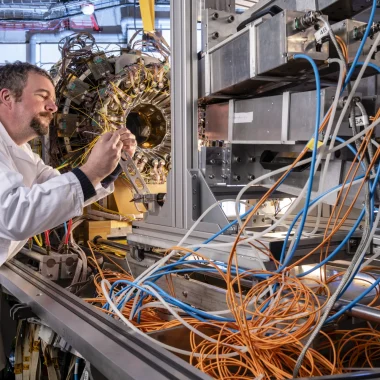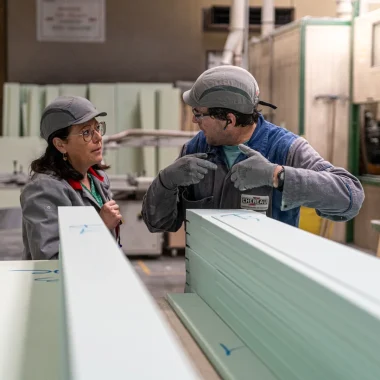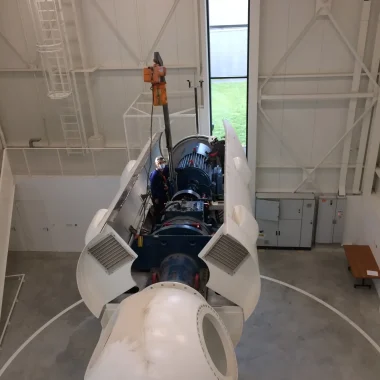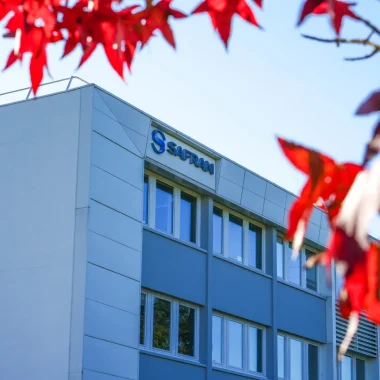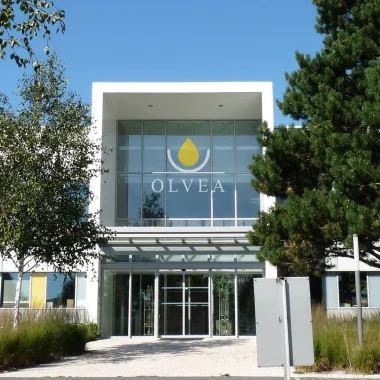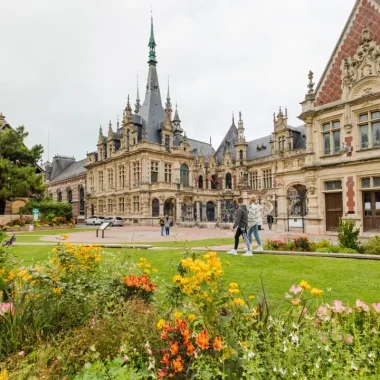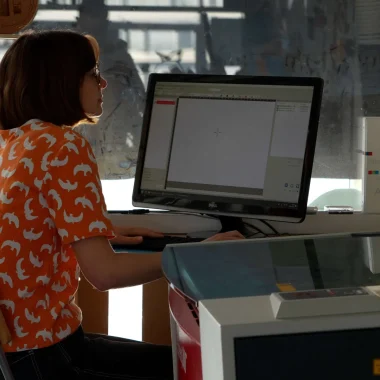CIREVE (the Centre Interdisciplinaire de Réalité Virtuelle, or Centre for Interdisciplinary Virtual Reality) is at the heart of the University of Caen Normandy’s technology centre, created in 2006 and, since 2012, part of the training and research unit for humanities and the social sciences (the Unité de Formation et de Recherche, or UFR Humanités et sciences sociales). Today, CIREVE boasts the largest immersive VR room in any university in France. From training to teaching via scientific research, this dedicated facility once again places Caen and Normandy at the forefront of innovation. Discover the story…
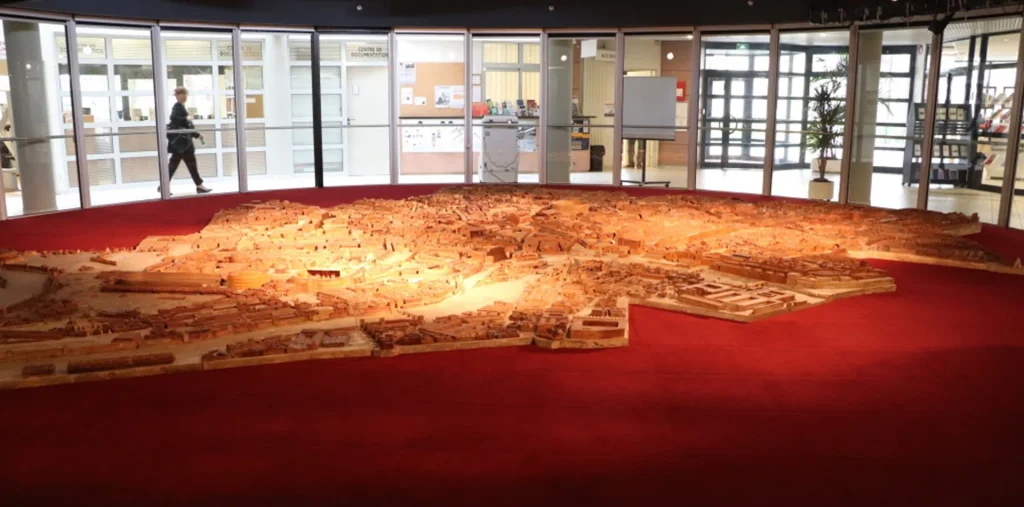
From model to virtual model
Entering the University of Caen’s Maison de la Recherche en Sciences Humaines (MRSH, the centre for research in human sciences), you can’t miss it – on the floor, a large model of ancient Rome takes pride of place in the heart of the building. ‘It may seem odd, but CIREVE was born from this,’ explains the beaming Director, Philippe Fleury. This plaster model made by Paul Bigot on a scale of 1/400th – one of three that exist in the world – is an exceptional piece of heritage, listed as an historic monument. ‘When the MRSH was built in 1994, the University of Caen asked the architects to place this model at the centre of the building. In parallel, the Director at that time wanted to propose a digital project based around this plan of Rome, as a symbol of the modernity of the human sciences,’ recalls Philippe Fleury.
Others thought we were crazy, but we believed in it, and it worked!
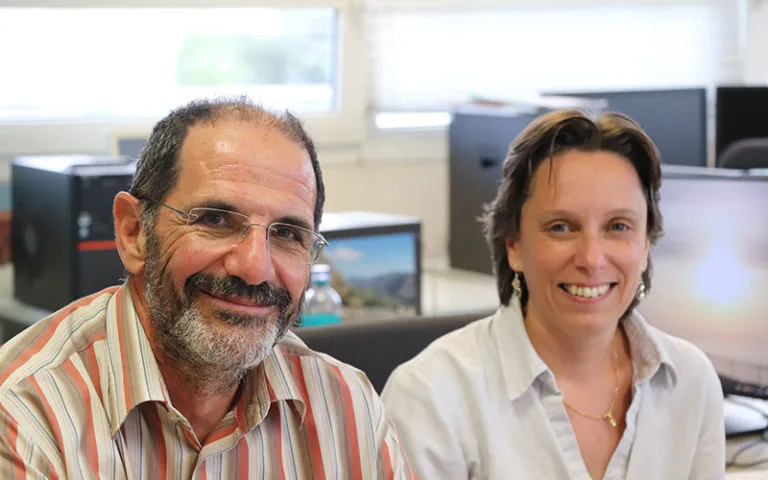
No sooner said than done. A small team was put together very rapidly, with the rather crazy challenge of making a virtual reality model – not simply a reconstitution of Rome in the 4th century AD, but something offering walks along Rome’s streets… with the added difficulty of having to develop this digital model by hand. ‘It was expensive and complex, as the physical model and the virtual model weren’t directly linked. The plaster model dated back to what was known in the interwar period and couldn’t be modified; and scanning a dated piece wouldn’t have made scientific sense,’ adds Sophie Madeleine, a research engineer at CIREVE.
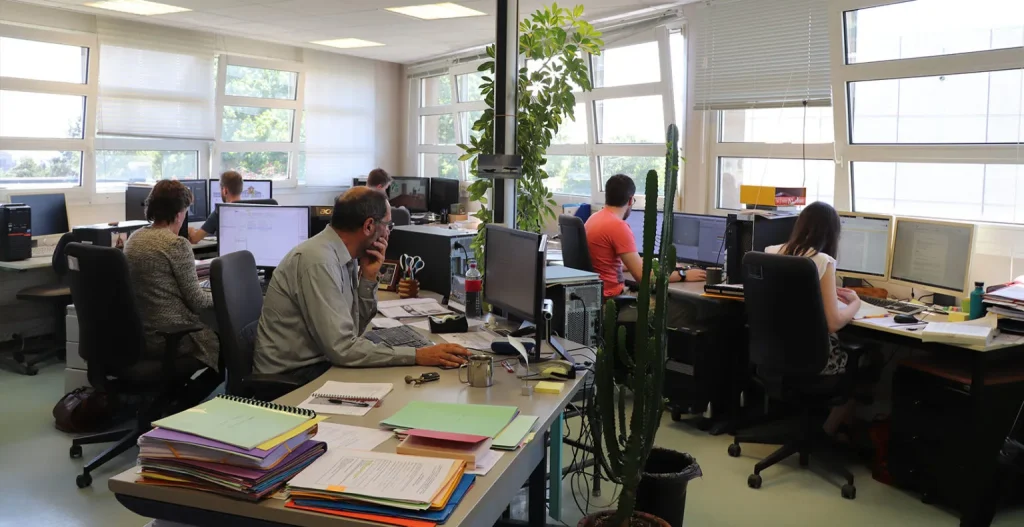
Two completely new facilities
It was doubly complex, as VR, that interaction in real time with a three-dimensional digital environment, requires very fast calculators, powerful graphics cards and numerous skills… Nine years later, in response to all this, Philippe Fleury, then university Vice-President, launched a piece of research to work out which university sectors might be interested by virtual reality. Medicine, sports, geography, neuropsychology and more… ‘Around a dozen university teams responded and, through that, the idea was born to create an interdisciplinary centre.’ In 2006, the team initially dedicated simply to the plan of Rome was replaced by the greater CIREVE project.
To ensure the setting up of interdisciplinary VR, two facilities have been put in place in the heart of the building completed in 2015. The first is a lecture hall with 220 seats, equipped to carry out VR sessions directed by a science mediator, that’s to say, a person who leads others into the virtual environment. ‘Using stereoscopy and 3D glasses, the audience is passive; it’s the mediator who decides what to show,’ emphasises Sophie Madeleine. The second facility is an immersive room measuring 5m by 10m, the largest in a French university. It’s used, in particular, for carrying out experiments. ‘For training purposes, we insisted that we wanted to have the two facilities side by side, so that the computers and graphics systems of the two could be shared, making it possible to have a person undergoing a live experiment in the immersive room and the people in the lecture hall alongside following the experiment directly,’ Philippe Fleury adds.
We’re the only ones to have put together these facilities with the notion of doing training in VR.
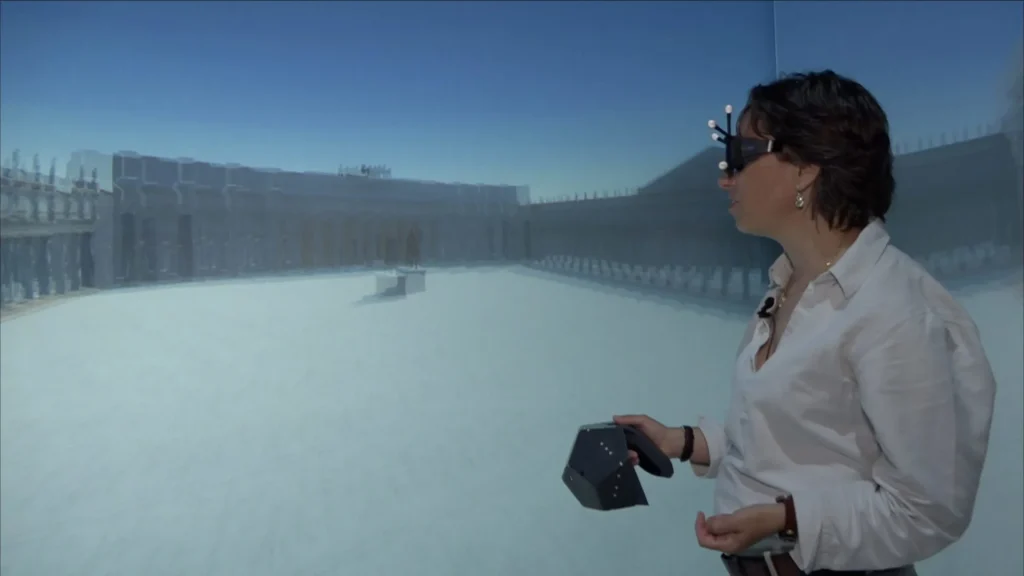
Research and education
There are three ways of moving about in the immersive room: in the real space, but that space is of course limited; thanks to a flystick, a wireless joystick allowing the user to move about in three dimensions as far as the limits of the virtual model allow; or on a latest generation treadmill on pneumatic cylinders. ‘In this case, the environment is regulated by the user’s walking and adapts to the individual’s choices. It can, for example, simulate rough surfaces, especially useful in the context of teams working on old people’s issues of balance or Ehlers Danlos Syndrome (when people have exceptionally flexible joints),’ specifies Sophie Madeleine. Geography studies of coastal phenomena with flooding simulations, crossings for old people to ensure road safety… along with such examples of its uses, the team led by Francis Eustache from Inserm [a French public research organisation dedicated to human health] is employing it in the context of work on Alzheimer’s disease: ‘Using virtual reality, no one is disturbed and we can study developments via various sensors that constantly follow a patient’s gaze and trajectory. The researchers have realised that they’ve been detecting 10% more cases of early-onset Alzheimer cases this way than by using paper-based tests.’
While these unique facilities attract researchers from across the world, CIREVE also gets the general public involved. Several times a year, the Nocturnes du Plan de Rome, that’s to say virtual tours of ancient Rome using 3D glasses and accompanied by a science mediator, are organised in the Daure lecture hall at the University of Caen. ‘Last season, almost 220 people on average came to each show,’ Sophie Madeleine is delighted to say. To meet the strong demand, CIREVE is now considering a project for touring schools, in order to be able to present directly the virtual model in establishments that have the necessary facilities. In parallel, the CIREVE team has also developed an app aimed at individuals, called Roma in Tabula: ‘The idea is to present a dozen ancient Roman buildings interactively that can be downloaded onto a smartphone, tablet or computer. The buildings appear in augmented reality and users can wander around inside them, as well as accessing related documentation.’
The idea is to share our virtual models and to impart to others the research that allows us to reach our results.
CIREVE – A Quick Overview
The CIREVE (Centre Interdisciplinaire de Réalité Virtuelle – Interdisciplinary Virtual Reality Centre) is aimed at a range of different groups: scientific research, the public, schoolchildren, students, and individuals.
The technical equipment is paired up: an amphitheatre and an immersion room, the largest in France in a university setting. This is reinforced by the Rome Map Room in the Maison de la Recherche en Sciences Humaines (the Human Sciences Research Centre), which offers teaching visits of Ancient Rome.
The scientific projects based around the CIREVE are organised into three strands: representation, that is to say the restitution of the environment and sounds of the period, based on ancient sources, validated by the scientific community, and used to extend knowledge and understanding as well as presenting the results to the public; experimentation to analyse and define the spatial properties of gests, observe the behaviour of patients with different medical conditions in virtual environments and to test hypotheses as well as the cultural memory; the creation and development of tools to test navigation methods in a virtual world, as well as the restitution of reality.
A few examples of work produced: the layout of Ancient Rome; the University of Caen prior to the Second World War; the church of Our Lady of Saint-Lô before the Second World War; the Caen Memorial Museum in Virtual Reality; the ancient site of Vieux-la-romaine in the 2nd century; pre-war Caen…
9 members of staff work in the CIREVE, which brings together a whole range of skills, around 360 researchers regularly use the facilities, as well as the Universities of Rouen and Le Havre…
Thematics

